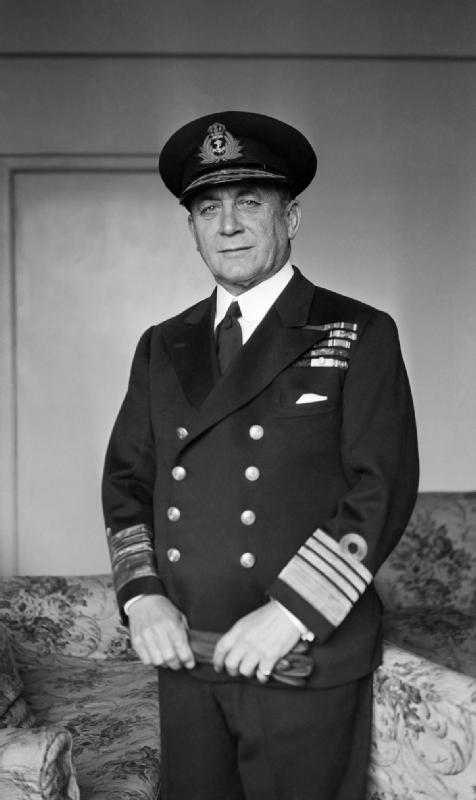Max Horton
(1883 - 1951)
By Martin Sugarman

Admiral Max Horton was born on November 29, 1883, in Rhosneigr, Anglesey, Wales, the son of Robert Angel Horton and Esther Maude Goldsmid of the famous D’Avigdor-Goldsmid Anglo-Jewish family.
In 1898, he joined the Royal Navy as an officer cadet and soon won a bravery award for rescue operations at sea.
At the beginning of WWI, he commanded a submarine and by the war’s end commanded the British overseas submarine flotilla serving in the North Sea and Baltic and winning three Distinguished Service Orders (DSO) for sinking several enemy ships. He also initiated the tradition of submarines flying the “Jolly Roger” flag on returning after successful patrols. A Captain of various battleships by war’s end, he was soon promoted to Vice-Admiral in 1937, commanding the Reserve Fleet, and then to Rear Admiral commanding all British submarines.
As WWII began, he created Atlantic Convoy rescue ships to pick up survivors from U-boat sinkings, with fully equipped hospital facilities and naval surgeons, and then, in 1942, became a full Admiral in what was to be his most important wartime role – Commander-in-Chief, Western Approaches.
He introduced new tactics to improve the defense of convoys and created the fleet of hunter ships to destroy the U-boats. In the opinion of many historians and Winston Churchill, Horton saved Britain from certain defeat in the Battle of the Atlantic, by keeping the route open for food, munitions, and troop supplies coming from North America.
He asked to retire in August 1945 and received the Knight Grand Cross (GCB) and a dozen other high-level foreign awards from grateful allied nations. He died in 1951 and there is a memorial to him in Liverpool Cathedral.
In 2019, a statue of Admiral Horton was erected in his hometown on Anglesey. A plaque about him was in the local library but the inscription failed to say anything about Horton’s Jewish heritage. In 2020, Martin Sugarman, the Archivist of The Association of Jewish Ex-Servicemen and Women of the UK (AJEX ) pointed this out and contacted American historian and philanthropist, Jerry Klinger, of the Jewish American Society for Historic Preservation. Kinger agreed to finance a plaque noting Admiral Horton’s ethnic heritage that was added to the foot of the statue.
Martin Sugarman (AJEX Archivist and Author).
Photo: Smith Wales (Capt), Royal Navy official photographer, Public domain via Wikimedia Commons.


